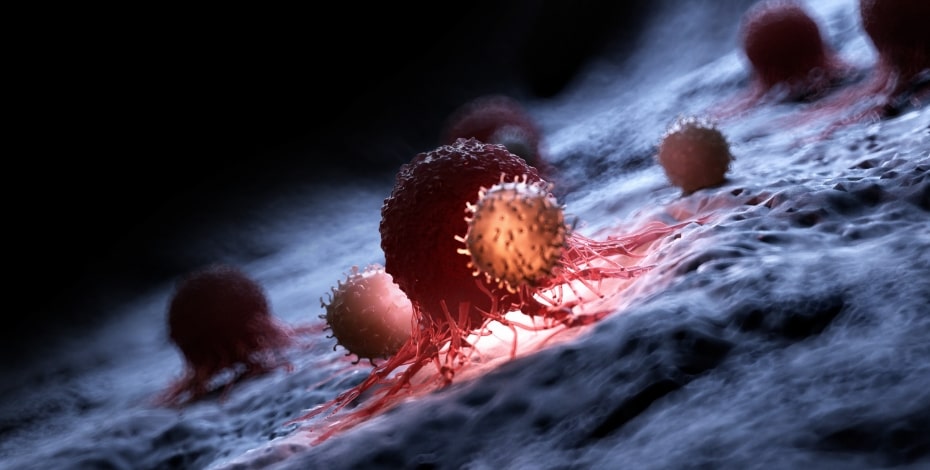
Blood cancer management

Associate Professor Catherine Granger FACP answers some questions about her Invited Topical Review on physiotherapy management of blood cancers in adults.
Your Invited Topical Review recognises a diverse array of blood cancers. Does the evidence generally apply to all of them?
There are many different types of blood cancer.
Two of the commonly known ones are leukaemia and lymphoma, but even within these two, there are many subtypes (40–50+).
In total, there are hundreds of different types of blood cancer.
From a physiotherapy perspective, while it is important to know what type of blood cancer your patient has been diagnosed with, it is essential to understand what type of medical treatments the patient has received or plans to receive.
Medical treatments, to some extent more than the specific diagnosis, have a significant influence on patient presentation, symptoms and side effects and the role of physiotherapy in their management.
Typically, the evidence can be generalised across the different types of blood cancer, although where possible I have narrowed it down to subgroups receiving different medical treatments.
For example, the patient presentation, complications and evidence for physiotherapy treatments for patients receiving a stem cell transplantation are unique and highlighted in several sections of the review.
The review first looks at the various medical treatments for blood cancers. Why is it important for physiotherapists to know about these?
Medical treatments for blood cancer are quite varied.
The type of medical treatments patients receive depends on several factors including the specific type and stage of blood cancer, their physiological age and their overall performance status.
Treatments are typically given in combination and can include chemotherapy, radiotherapy, oral therapies and/or stem cell transplantation.
It is important for physiotherapists to know about these treatments because they are each associated with slightly different side effects and complications.
In general, blood cancer treatment side effects can be severe, long-lasting and a predominant reason why physiotherapy management is important for this patient group.
During an initial physiotherapy assessment and at regular follow-up intervals, it is important to confirm the types of medical treatments patients have received or plan to receive as well as to screen for side effects and complications, many of which influence physiotherapy treatment.
The topical review goes into detail about complications that may arise and safety considerations for physiotherapy management (and how to adapt our treatments) under certain conditions.
What are the typical symptoms, side effects and complications caused by the underlying cancer and medical treatments?

Associate Professor Catherine Granger's Invited Topical Review on the physio management of blood cancers has been published in the April 2023 issue of the Journal of Physiotherapy.
There are many different types of symptoms and side effects of blood cancer.
One of the unique factors of blood cancer is the magnitude of different symptoms that patients can experience at one time.
The review lists the 32 most experienced symptoms, of which cancer-related fatigue comes out on top.
Complications are specific to the type of treatment a patient has received.
One of the most concerning complications is graft-versus-host disease, which is a major complication of allogeneic stem
cell transplantation.
It is seen in over 40 per cent of patients and typically occurs within the first 100 to 200 days after transplant.
It results in multi-organ impairments and requires the patient to be on long-term systemic immunosuppressive treatment.
The review goes into detail about graft-versus-host disease, patient presentation and impairments and provides recommendations within physiotherapy scope of practice for the prevention and treatment of graft-versus-host disease-related complications.
The strongest evidence seems to relate to exercise training. When and how should that be used?
Ideally, exercise training should occur before, during and after medical treatments.
The review includes a time line figure to highlight how exercise may be used across these time points as the rationale and prescription of exercise varies.
The strongest evidence in the field relates to exercise training programs that start before (or during) treatment and then continue during and after treatment.
In clinical practice, such programs are still uncommon, but with the rapidly growing evidence base, I hope we see more programs starting up quickly.
Certainly, the evidence now supports the benefit and safety of exercise training for patients with blood cancer across the treatment continuum and an important priority for physiotherapists is to ensure that we translate this into clinical practice with the establishment of programs.
>> Associate Professor Catherine Granger FACP is an Associate Professor of Physiotherapy at the University of Melbourne and the Head of Physiotherapy Research at the Royal Melbourne Hospital. She is a Fellow of the Australian College of Physiotherapists (as awarded in 2020).
© Copyright 2024 by Australian Physiotherapy Association. All rights reserved.





